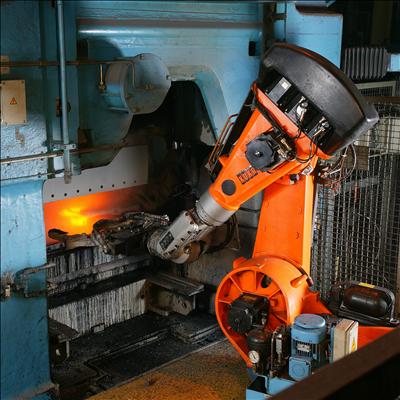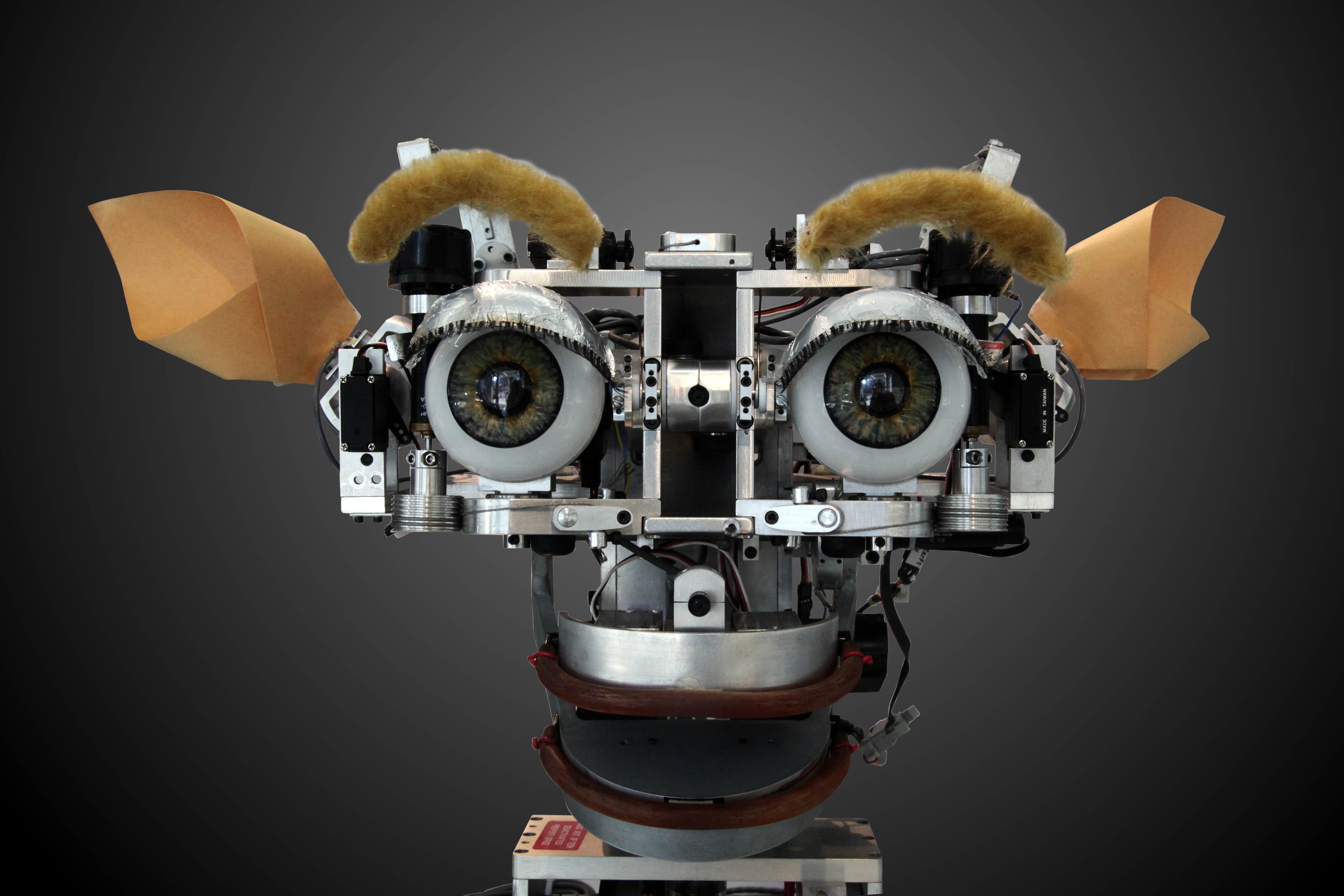|
Human–robot Collaboration
Human-Robot Collaboration is the study of collaborative processes in human and robot agents work together to achieve shared goals. Many new applications for robots require them to work alongside people as capable members of human-robot teams. These include robots for homes, hospitals, and offices, space exploration and manufacturing. Human-Robot Collaboration (HRC) is an interdisciplinary research area comprising classical robotics, human-computer interaction, artificial intelligence, process design, layout planning, ergonomics, cognitive sciences, and psychology. Industrial applications of human-robot collaboration involve Collaborative Robots, or cobots, that physically interact with humans in a shared workspace to complete tasks such as collaborative manipulation or object handovers. Collaborative Activity Collaboration is defined as a special type of coordinated activity, one in which two or more agents work jointly with each other, together performing a task or carrying out ... [...More Info...] [...Related Items...] OR: [Wikipedia] [Google] [Baidu] |
Cobot
A cobot, or collaborative robot, is a robot intended for direct human-robot interaction within a shared space, or where humans and robots are in close proximity. Cobot applications contrast with traditional industrial robot applications in which robots are isolated from human contact. Cobot safety may rely on lightweight construction materials, rounded edges, and inherent limitation of speed and force, or on sensors and software that ensure safe behavior. The International Federation of Robotics (IFR), a global industry association of robot manufacturers and national robot associations, recognizes two main groups of robots: industrial robots used in automation in an industrial environment and service robots for domestic and professional use. Service robots could be considered to be cobots as they are intended to work alongside humans. Industrial robots have traditionally worked separately from humans behind fences or other protective barriers, but cobots remove that separation. ... [...More Info...] [...Related Items...] OR: [Wikipedia] [Google] [Baidu] |
Human Factors And Ergonomics
Human factors and ergonomics (commonly referred to as human factors) is the application of psychological and physiological principles to the engineering and design of products, processes, and systems. Four primary goals of human factors learning are to reduce human error, increase productivity, and enhance safety, system availability, and comfort with a specific focus on the interaction between the human and the engineered system. The field is a combination of numerous disciplines, such as psychology, sociology, engineering, biomechanics, industrial design, physiology, anthropometry, interaction design, visual design, user experience, and user interface design. Human factors research employs methods and approaches from these and other knowledge disciplines to study human behavior and generate data relevant to the four primary goals above. In studying and sharing learning on the design of equipment, devices, and processes that fit the human body and its cognitive abilities, the ... [...More Info...] [...Related Items...] OR: [Wikipedia] [Google] [Baidu] |
Muscle Fatigue
Muscle fatigue is the decline in ability of muscles to generate force. It can be a result of vigorous exercise but abnormal fatigue may be caused by barriers to or interference with the different stages of muscle contraction. There are two main causes of muscle fatigue: the limitations of a nerve’s ability to generate a sustained signal (neural fatigue); and the reduced ability of the muscle fiber to contract (metabolic fatigue). Muscle contraction Muscle cells work by detecting a flow of electrical impulses from the brain which signals them to contract through the release of calcium by the sarcoplasmic reticulum. Fatigue (reduced ability to generate force) may occur due to the nerve, or within the muscle cells themselves. Neural fatigue Nerves are responsible for controlling the contraction of muscles, determining the number, sequence and force of muscular contraction. Most movements require a force far below what a muscle could potentially generate, and nervous fatigue is ... [...More Info...] [...Related Items...] OR: [Wikipedia] [Google] [Baidu] |
Industrial Robot
An industrial robot is a robot system used for manufacturing. Industrial robots are automated, programmable and capable of movement on three or more axes. Typical applications of robots include welding, painting, assembly, disassembly, pick and place for printed circuit boards, packaging and labeling, palletizing, product inspection, and testing; all accomplished with high endurance, speed, and precision. They can assist in material handling. In the year 2020, an estimated 1.64 million industrial robots were in operation worldwide according to International Federation of Robotics (IFR). Types and features There are six types of industrial robots. Articulated robots Articulated robots are the most common industrial robots. They look like a human arm, which is why they are also called robotic arm or manipulator arm. Their articulations with several degrees of freedom allow the articulated arms a wide range of movements. Cartesian coordinate robots Cartesian robots, ... [...More Info...] [...Related Items...] OR: [Wikipedia] [Google] [Baidu] |
Human–robot Interaction
Human–robot interaction is the study of interactions between humans and robots. It is often referred as HRI by researchers. Human–robot interaction is a multidisciplinary field with contributions from human–computer interaction, artificial intelligence, robotics, natural-language understanding, design, and psychology. Origins Human–robot interaction has been a topic of both science fiction and academic speculation even before any robots existed. Because much of active HRI development depends on natural-language processing, many aspects of HRI are continuations of human communications, a field of research which is much older than robotics. The origin of HRI as a discrete problem was stated by 20th-century author Isaac Asimov in 1941, in his novel ''I, Robot''. He states the Three Laws of Robotics as: # A robot may not injure a human being or, through inaction, allow a human being to come to harm. # A robot must obey the orders by human beings except where such orders would ... [...More Info...] [...Related Items...] OR: [Wikipedia] [Google] [Baidu] |
Computer-supported Collaboration
Computer-supported collaboration research focuses on technology that affects groups, organizations, communities and societies, e.g., voice mail and text chat. It grew from cooperative work study of supporting people's work activities and working relationships. As net technology increasingly supported a wide range of recreational and social activities, consumer markets expanded the user base, enabling more and more people to connect online to create what researchers have called a computer supported cooperative work, which includes "all contexts in which technology is used to mediate human activities such as communication, coordination, cooperation, competition, entertainment, games, art, and music" (from CSCW 2004). Scope of the field Focused on output The subfield computer-mediated communication deals specifically with how humans use "computers" (or digital media) to form, support and maintain relationships with others (social uses), regulate information flow (instructional uses), ... [...More Info...] [...Related Items...] OR: [Wikipedia] [Google] [Baidu] |
Collective Intentionality
In the philosophy of mind, collective intentionality characterizes the intentionality that occurs when two or more individuals undertake a task together. Examples include two individuals carrying a heavy table up a flight of stairs or dancing a tango. This phenomenon is approached from psychological and normative perspectives, among others. Prominent philosophers working in the psychological manner are Raimo Tuomela, Kaarlo Miller, John R. Searle, and Michael E. Bratman. Margaret Gilbert takes a normative approach dealing specifically with group formation. David Velleman is also concerned with how groups are formed, but his account lacks the normative element present in Gilbert. The notion that collectives are capable of forming intentions can be found, whether implicitly or explicitly, in literature going back thousands of years. For example, ancient texts such as Plato's ''Republic''Allen, R.E. 2006. Plato, ''The Republic''. New Haven: Yale University Press. discuss the coope ... [...More Info...] [...Related Items...] OR: [Wikipedia] [Google] [Baidu] |
Industrial Robots
An industrial robot is a robot system used for manufacturing. Industrial robots are automated, programmable and capable of movement on three or more axes. Typical applications of robots include welding, painting, assembly, disassembly, pick and place for printed circuit boards, packaging and labeling, palletizing, product inspection, and testing; all accomplished with high endurance, speed, and precision. They can assist in material handling. In the year 2020, an estimated 1.64 million industrial robots were in operation worldwide according to International Federation of Robotics (IFR). Types and features There are six types of industrial robots. Articulated robots Articulated robots are the most common industrial robots. They look like a human arm, which is why they are also called robotic arm or manipulator arm. Their articulations with several degrees of freedom allow the articulated arms a wide range of movements. Cartesian coordinate robots Cartesian robots ... [...More Info...] [...Related Items...] OR: [Wikipedia] [Google] [Baidu] |
Robotics
Robotics is an interdisciplinary branch of computer science and engineering. Robotics involves design, construction, operation, and use of robots. The goal of robotics is to design machines that can help and assist humans. Robotics integrates fields of mechanical engineering, electrical engineering, information engineering, mechatronics, electronics, bioengineering, computer engineering, control engineering, software engineering, mathematics, etc. Robotics develops machines that can substitute for humans and replicate human actions. Robots can be used in many situations for many purposes, but today many are used in dangerous environments (including inspection of radioactive materials, bomb detection and deactivation), manufacturing processes, or where humans cannot survive (e.g. in space, underwater, in high heat, and clean up and containment of hazardous materials and radiation). Robots can take any form, but some are made to resemble humans in appearance. This is claim ... [...More Info...] [...Related Items...] OR: [Wikipedia] [Google] [Baidu] |







